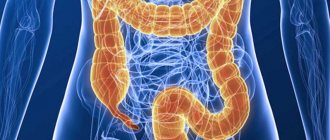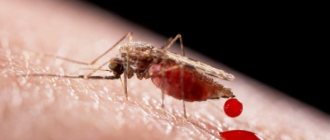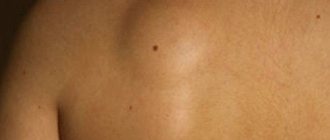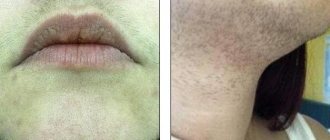Hypercholesterolemia is a significant increase in blood cholesterol levels. As a result of changes in cholesterol levels, a predisposition to various diseases occurs. Especially, a highly elevated level of this blood component affects the cardiovascular system. The presence of this deviation leads to atherosclerosis, cardiac ischemia, stroke, and other serious diseases that can result in death. Constant monitoring of cholesterol levels in the body eliminates the possibility of various diseases.
ICD-10 code
In the International Classification of Diseases, 10th revision, various types of hypercholesterolemia are classified in group E78. Pure hypercholesterolemia is allocated to a separate subgroup E 78.0, which includes 5 types of pathologies:
- hyperlipidemia (group A);
- hyper-β-lipoproteinemia;
- hyperlipoproteinemia with LDL;
- familial hypercholesterolemia;
- Fredrickson hyperlipoproteinemia, type IIa.
In ICD-10, hypercholesterolemia as a separate disease is also included in group 78.2
Complications
The most unpleasant consequence of high cholesterol is the development of atherosclerosis (lipoprotein metabolism disorder). The deposition of cholesterol plaques on the vascular walls leads over time to a loss of their elasticity, which affects the functioning of the cardiovascular system. As a result, this pathological process causes a stroke or heart attack. The chronic nature of atherosclerosis affects the functioning of the circulatory system, resulting in vascular spasm or ischemia of internal organs.
Familial hypercholesterolemia
The disease is caused by a genetic disorder of fat metabolism. There are two types: homozygous - the defective gene is received from both parents, heterozygous - from one. The first disease is more rare (1 person per 1,000,000), but much more severe. The level of cholesterol in it exceeds the norm by 4-6 times. The second pathology is more widespread (1 person out of 500), but less dangerous. The level of sterol is 2-3 times higher than that of a healthy person.
People with this disease are at risk of early development of atherosclerosis, as well as its complications: coronary heart disease (CHD), myocardial infarction.
What symptoms are you worried about?
A specific rim may appear on the cornea of the eye as the disease progresses.
Acquired or hereditary hypercholesterolemia may not manifest itself in any way at the initial stages of development. The fact that the level of cholesterol in the blood is elevated can be determined based on diagnostic methods. As the degree progresses, symptoms become more severe. The main sign indicating a malfunction in the body is the formation of dense nodes under the skin, which are located on the eyelids, where the tendons pass. In addition, there is an accumulation of cholesterol in the form of a gray-white rim located along the edges of the corneal arch. This syndrome occurs more often in older people.
Causes
In most cases, the cause of hypercholesterolemia is lifestyle errors. First of all, poor nutrition. When the diet contains excess trans fats, saturated fats, sugar, cholesterol (to a lesser extent), this leads to an increase in the concentration of TC and LDL. A sedentary lifestyle contributes to impaired fat metabolism.
Causes beyond a person's control include genetic ones. A defect in one of the genes on chromosome 19, inherited from one or both parents, leads to a disorder of fat metabolism that is not dependent on nutrition.
Reasons for appearance
Changes in cholesterol levels create a predisposition to various diseases.
The development of hypercholesterolemia can result from the occurrence of various pathologies in the body and not only. Often, external physical influences or psychological factors affect cholesterol levels in the body.
There is a high probability of getting this disease as a result of a hereditary factor. The greatest chance of hypercholesterolemia arises from parents suffering from this disease together.
At the first appointment with a doctor, the patient’s daily diet is first determined. In most cases, the development of high cholesterol results from overeating foods containing high cholesterol. Such products can be both vegetable and animal fats.
On a note! If, when taking the test, the total cholesterol level goes off scale, then it is recommended to take the test again. This is due to the fact that patients often violate the rules for taking a blood test.
If the blood test contains a high level of cholesterol, it is recommended to repeat the test procedure. If in a repeated analysis the cholesterol level is close to the results of the first, this indicates that high cholesterol was not the result of an incorrect test.
If no pathology is found in the body that leads to dysfunction of organs or the body as a whole, the following diseases affecting cholesterol levels may be present:
- Diabetes. Impaired glucose metabolism in the body contributes to changes in cholesterol.
- Hypothyroidism. This is a disease of the thyroid gland caused by a lack of hormones.
- Various diseases with pronounced symptoms affecting the functioning of the liver.
Hypercholesterolemia results from taking various medications. In particular, you should pay attention to taking immunosuppressants and beta blockers.
When diagnosing the occurrence of this pathology of blood composition, the independent effect on blood content is often taken into account. A sedentary lifestyle, poor diet and bad habits all affect cholesterol levels in the body. This is especially true for alcohol and nicotine products.
Hypercholesterolemia can also occur after moving to another age category. Especially, the strong occurrence of pathology increases in the presence of heredity. As a result of moving into older age, hypertension occurs, which also affects the level of cholesterol in the body.
Previous diseases of the cardiovascular system have a strong effect on cholesterol levels. Especially after suffering a myocardial infarction.
At-risk groups
Part of the population is more susceptible to developing hypercholesterolemia than others. Risk factors include:
- Floor. In women after menopause, the level of “bad” lipoproteins increases.
- Age. Men over 45 and women over 55 are at risk.
- Family history. Hypercholesterolemia more often develops in people whose parents/siblings suffered from manifestations of heart disease before the age of 55 (men) or before the age of 65 (women).
- Obesity. Mass index more than 30.
- Waist circumference. The likelihood of developing hypercholesterolemia is higher in men with a waist circumference of more than 102 cm, as well as women with a waist circumference of more than 89 cm.
- Smoking. Components of tobacco smoke can damage the walls of blood vessels, making them an excellent platform for the attachment of atherosclerotic plaques. Smoking affects the “good” lipoproteins: it increases the level of the former and decreases the latter.
- Diabetes. High blood sugar promotes the growth of LDL and decreases the concentration of HDL. It can also damage the lining of the arteries.
Biochemical disorders
Biological chemistry helps to understand the mechanism of changes caused by one or another pathological process. The biochemistry of hypercholesterolemia is a failure in lipid metabolism. Different types of fats enter the human body. As a result of a complex, multi-step process, they are broken down and “processed” by appropriate enzymes. Free cholesterol does not dissolve in the blood.
Light fats in the split state are “captured” by red blood cells, transforming into chylomicrons -
transport forms. With the flow of blood and lymph, they move throughout the body, carrying cholesterol. But in order to penetrate inside the organs, “transport” needs the help of lipoproteins - complexes of lipids and proteins.
It is lipoproteins that provoke the development of hypercholesterolemia. They differ in density. Low-density lipoproteins (LDL) are responsible for transporting cholesterol from the liver to organ tissues. This is mainly cholesterol that enters the body with food. When it increases, a lot of so-called “bad” cholesterol is transferred into the cells.
High-density lipoproteins (HDL) transport excess cholesterol from cells back to the liver. Hypercholesterolemia occurs when there are disturbances in the activity of lipoproteins.
Diagnostics
Most people with high cholesterol do not have any symptoms until atherosclerosis-related diseases become apparent.
People with a hereditary form of the disease develop xanthomas - skin nodules filled with cholesterol. Typical places are various tendons, the Achilles are especially favorite. Often flat nodules ranging in size from a pea to a bean are noted on the eyelids. Such neoplasms are called xanthelasmas.
People over 20 years old are recommended to take a blood test every 5 years, including: LDL, HDL, triglycerides, total cholesterol. Since hypercholesterolemia initially develops without symptoms, this is the only way to diagnose it in time. More frequent testing is recommended for anyone at risk. Applies to patients whose relatives had heart problems or high cholesterol levels at an early age. Those whose relatives are parents or grandparents need to be especially attentive to their health.
Normal indicators of fat metabolism in healthy people:
- TC – less than 5.0 mmol/l (<190 mg/dl);
- HDL – more than 1.0 mmol/l (> 40 mg/dl) in men and more than 1.2 mmol/l (> 45 mg/dl) in women;
- LDL – less than 3.0 mmol/l (<115 mg/dl);
- triglycerides – less than 1.7 mmol/l (< 150 mg/dl).
For patients with coronary artery disease, as well as diabetes mellitus, the normal level is considered:
- TC – less than 4.5 mmol/l (<175 mg/dl);
- LDL – less than 1.8 mmol/l (<70 mg/dl).
Cholesterol taken under control in time reduces the risk of developing heart pathologies, heart attack, and death due to heart disease, even if they already exist.
In addition to a blood test, the therapist will conduct a general examination, study the patient’s medical history, measure pulse, blood pressure, and listen to the heart. If there is a suspicion of cardiovascular pathologies, the doctor will refer the person to see a cardiologist.
Children and young people are also recommended to monitor cholesterol levels twice: at the age of 9-11 years, and then 17-21 years. If a hereditary disease is suspected, testing may be prescribed at an earlier age. You should not donate blood for cholesterol to adolescents (12-16 years old) due to the risk of receiving false positive results associated with puberty.
Forms of hypercholesterolemia
Hypercholesterolemia is divided into primary and secondary.
In accordance with the classification of the World Health Organization, the following forms of hypercholesterolemia are distinguished:
- type I (hereditary hyperchylomicronemia, primary hyperlipoproteinemia) - incidence 0.1%, occurs with lipoprotein lipase deficiency or defects in the activator protein of this enzyme, manifested by an increase in the level of chylomicrons, which transport lipids from the intestine to the liver;
- type IIa (hereditary hypercholesterolemia, polygenic hypercholesterolemia) – frequency of occurrence is 0.2%, can develop against the background of poor nutrition, and can also be polygenic or hereditary, manifested by xanthomas and early onset of cardiovascular pathology;
- type IIb (combined hyperlipidemia) - incidence 10%, occurs due to excessive production of triglycerides, acetyl-CoA and apolipoprotein B or slow clearance of low-density lipoproteins; accompanied by an increase in the blood content of triglycerides in the composition of very low density lipoproteins;
- type III (hereditary dys-beta-lipoproteinemia) – frequency of occurrence is 0.02%, can develop with homozygosity for one of the isoforms of apolipoprotein E, manifested by an increase in the level of intermediate density lipoproteins and chylomicrons;
- type IV (endogenous hyperlipemia) – frequency of occurrence is about 1%, manifested by an increase in triglyceride concentrations;
- type V (hereditary hypertriglyceridemia) - manifested by increased levels of very low-density lipoproteins and chylomicrons.
Rarer forms of hypercholesterolemia that are not included in this classification include hypo-alpha lipoproteinemia and hypo-beta lipoproteinemia, the incidence of which is 0.01–0.1%.
Familial hypercholesterolemia can be homozygous or heterozygous.
The main method for detecting hypercholesterolemia is a biochemical blood test.
Features of treatment
In the initial stages of hypercholesterolemia, if the disease is not hereditary, for many people it is enough to reconsider their lifestyle. Change your diet, start moving more. Treatment with medications makes sense if changes do not help.
Diet, sample menu
The most effective diet for lowering cholesterol is a vegetarian one. People who cannot find the strength to give up meat are advised to at least reduce their consumption of red meat (pork, beef). Substitutes can be legumes, chicken, rabbit.
Your diet will be healthier if you follow these tips:
Choose healthy fats. Saturated ones increase LDL cholesterol levels. Red meat, eggs, and whole dairy products are the main sources of these lipids. Replace them with vegetable oil, nuts, and seeds.
Avoid trans fats. There are a lot of them in all kinds of snacks and fast foods. Conscientious manufacturers indicate the amount of trans fats on the packaging.
Limit cholesterol intake: meat, egg yolks, low-fat dairy products.
Eat whole grain cereals. Oatmeal, buckwheat, millet, rice, durum wheat pasta contain fiber, vitamins, and minerals that the body needs.
Focus on fruits and vegetables. These products are rich in dietary fiber, vitamins, and minerals. Seasonal vegetables are considered the healthiest.
Add halibut, tuna, cod, herring, mackerel, and salmon to your diet. These types of fish contain much less saturated fat and cholesterol than chicken, beef, and pork. Salmon, herring, and mackerel are good sources of omega-3 fatty acids, which are essential for a healthy heart.
Moderate doses of alcohol can increase lipoprotein levels, but not enough to recommend it as a treatment option. Abuse leads to disruption of the liver, increases the risk of developing atherosclerosis, as well as many other diseases.
An ideal diet should include (% of total calories):
- saturated fat – less than 7%;
- monounsaturated fats – 20%;
- polyunsaturated fats – 10%;
- proteins – 15%;
- carbohydrates - 50%;
- dietary fiber - 25 g/day;
- cholesterol – less than 200 mg/day.
What might your daily menu look like?
- Breakfast: oatmeal with banana, orange juice, toast, coffee or tea.
- Lunch: a portion of vegetable soup, an apple, a salad of tomatoes, cabbage, herbs, seasoned with low-fat sour cream, fish, compote.
- Dinner: rice, low-fat cheese, seasonal vegetable salad, beans.
- Snacks: vegetables, nuts, seeds, carrots.
Medications
Hypercholesterolemia is a rare problem that many people can treat without medication. All drugs are prescribed only when diet and physical activity are ineffective. A doctor may prescribe cholesterol-lowering pills to patients who are at high risk of developing complications. Taking medication does not eliminate the need to follow a diet. On the contrary, proper nutrition is a prerequisite for drug therapy.
There are 5 groups of medications used to correct cholesterol levels:
- Statins, another name for HMG-CoA reductase inhibitors. These include lovastatin, atorvastatin, simvastatin, pravastatin, fluvastatin, rosuvastatin. Statins block the enzyme needed for cholesterol synthesis. They have the ability to reduce cholesterol levels, “bad” lipoproteins, and increase “good” ones.
- Bile acid sequestrants. The most typical representatives of the group are cholestyramine and colestipol. These drugs bind the body's free bile acids and are excreted in the feces. The only way to combat fatty acid deficiency is to break down cholesterol. This group of drugs is rarely prescribed because of their ability to lower the level of “good” lipoproteins.
- Vitamin B3 (PP, nicotinic acid). Its large doses have cholesterol-lowering properties.
- Fibrates. Gemfibrozil, fenofibrate, clofibrate are prescribed to people primarily to combat elevated triglyceride levels.
- Cholesterol absorption inhibitors. The body obtains 20% of sterol from food. Drugs in this group reduce the absorption of cholesterol from food. A typical representative of the class is Ezetimibe.
Statins are the first choice drugs.
Diet for hypercholesterolemia
In the initial stages of hypercholesterolemia, it is enough to exclude foods with “bad” cholesterol from the diet. This measure will help keep its indicator within acceptable standards.
General guidelines regarding diet for hypercholesterolemia can be summarized in a few simple rules:
- Reduce the amount of calories consumed, especially with a sedentary lifestyle;
- Don’t overeat at night, control your body weight;
- Reduce the amount of animal fat consumed by replacing it with vegetable oils;
- Include foods containing vitamins and microelements in your diet;
- Do not give up eating lean meats;
- Limit salt intake;
- When choosing a dietary table, remember about food preferences and do not elevate prevention to the rank of punishment.
The table provides an approximate list of foods recommended and contraindicated in the diet for hypercholesterolemia.
With hypercholesterolemia, all dishes are steamed, boiled or baked.
Prevention
Prevention of non-hereditary hypercholesterolemia is in many ways similar to treatment:
- a low-salt diet rich in fruits, vegetables, and whole grain cereals;
- limiting the consumption of animal fats;
- moderate consumption of “good fats”;
- to give up smoking;
- at least 30 minutes of physical exercise daily (at least brisk walking);
- alcohol restriction;
- timely blood testing for cholesterol, LDL, HDL, triglycerides.
Therapy for hypercholesterolemia
Lowering the concentration of cholesterol in the blood can be achieved by changing lifestyle and using medications. Adjusting your usual lifestyle with hypercholesterolemia is essentially preventive measures to maintain acceptable cholesterol levels.
If they do not help, the doctor takes medication measures, prescribing:
- Omega-3 acids – reduce the risk of pathological changes in heart rhythm, increase the life expectancy of patients after a heart attack. Maintain normal cholesterol levels, prevent blood clots, making blood vessels more elastic and stronger.
- Fibrates – correct lipid metabolism in the body, activate the enzyme lipoprotein lipase, accelerating fat metabolism. Helps increase the level of “good” cholesterol, preventing the development of atherosclerosis. Can be used simultaneously with statins.
- Bile acid sequestrants - use cholesterol produced by the liver for their synthesis. They reduce the possibility of developing heart pathologies, including ischemia, and reduce the number of deaths from myocardial infarction.
- Inhibitors - absorb cholesterol from the intestines, lowering its content in the blood. They are relatively harmless and can be taken by patients suffering from serious diseases (for example, liver). Can be taken with statins.
- Statins inhibit the production of cholesterol by the liver and reduce its concentration inside cells. They promote the destruction of fats, increase the lifespan of patients, reduce the number of possible consequences of atherosclerosis and the intensity of vascular disorders. They can provoke negative changes in muscle tissue and the liver, and therefore their use requires systematic monitoring of blood tests for signs of liver damage. Not prescribed for liver diseases.
Omega-3 acids
Statins
What to form a diet from
Product usefulness rating:
- Fish. Even fatty varieties are beneficial, although you should consult your doctor about using fish oil.
- Meat. It is better to cook lean fillets and tenderloins from which the fat layer has been removed. The consumption of sausages, sausages and small sausages is excluded.
- Dairy products. Skim milk is recommended; other milk products are not recommended to be included in the diet.
- Nuts. They reduce cholesterol levels, but increase excess weight.
- Green tea. It has an antisclerotic effect, but does not affect body weight.
- Bran and wholemeal flour. They replace premium flour; you cannot eat baked goods, cookies, or sweets, as they contain a large amount of “bad” cholesterol.
- Cereals and porridges made from them. Prepared with skim milk, often included in the diet.
- Vegetables and fruits. Fiber is extremely useful, as it has a positive effect on the gastrointestinal tract, removes cholesterol, and fills the body with microelements.
Any alcohol is prohibited even with moderate hypercholesterolemia (up to 6.5 mmol/l). You should not drink more than 20 ml of alcoholic beverages per day, or you should completely exclude it from your diet if you have heart and vascular diseases.
The best ways to prepare dishes are boiling, stewing or baking. If you are overweight, you need to monitor the hypoglycemic index of your meals.
Standard Treatments
Non-drug methods used in the treatment of hypercholesterolemia:
- Correction of body weight.
- An individually designed physical activity plan, taking into account existing pathologies and oxygen flow.
- Normalization of the diet: increasing the proportion of vegetables and fruits, avoiding fatty and fried foods, reducing the calorie content of the diet.
- Avoiding the use of alcohol to slow down weight gain and reduce side effects when taking medications systematically.
- Smoking ban, as nicotine increases the risk of developing heart and vascular pathologies and reduces the concentration of anti-atherogenic substances.
Pathogenesis
Although hypercholesterolemia itself is asymptotic, prolonged elevation of serum cholesterol leads to atherosclerosis. If levels of this compound remain elevated for decades, it leads to the formation of atherosclerotic plaques inside the arteries. As a result, there will be a gradual narrowing of the lumen of the affected arteries.
Smaller atherosclerotic plaques can rupture the walls and form a blood clot, obstructing blood flow. A sudden blockage of a coronary artery can lead to a heart attack. Blockage of the arteries supplying blood to the brain can cause a stroke. If the development of blockage of the lumen of blood vessels occurs gradually, then the amount of blood supplying tissues and organs slowly decreases, which leads to disruption of their function. In such cases, tissue ischemia, that is, restriction of blood flow to them, is expressed by certain symptoms. For example, temporary cerebral ischemia, otherwise called a transient ischemic attack, can lead to temporary loss of vision, dizziness and poor coordination, speech problems, etc.
Insufficient blood flow to the heart can cause pain in the chest area, and ocular ischemia is manifested by temporary loss of vision in one eye. Insufficient blood supply to the legs can lead to pain in the calves when walking.
Certain types of illness may result in specific physical manifestations. For example, hereditary hypercholesterolemia may be associated with xanthelasma of the eyelids. This is a deposit of a yellow substance rich in cholesterol in the skin around the eyelids. It is also possible to form a lipoid arch of the cornea and xanthoma.
Mechanism of action of the disease
Let's try to imagine what happens in the body, how the cholesterol substance moves through the blood channels, and what its role is.
Cholesterol obtained from food is transported into the cellular tissue through the bloodstream. And here the principle of “key and lock” begins to operate; LDL molecules begin to attach to cell receptors, fitting perfectly into the structure.
Cellular receptors and their presence guarantee the penetration of cholesterol into cell tissue, where it immediately begins to function in accordance with its natural purpose.
The presence of an incorrect gene causes the encoding of cellular receptors. A defect in this gene interferes with receptor development, destroys the structure and quantitative composition.
LDL ceases to be absorbed at the cellular level and remains a free substance in the bloodstream. And this is the reason for the onset of atherosclerosis. A high level of “bad” cholesterol in the bloodstream is the cause of serious illnesses, primarily associated with the heart.
Treatment of children and adolescents
The cornerstone in the treatment of children with familial hypercholesterolemia are statins. These drugs do not affect the physical or mental development of a growing organism. The goal of treatment is to reduce LDL levels by 50-70% from baseline (to 130 mg/dL). A number of leading experts consider it advisable to use drug therapy for up to 8-10 years. Performing low-density lipoprotein apheresis in children is a technically difficult procedure, but can be used in the homozygous form.
Treatment of hypercholesterolemia
Treatment of the disease is not just important, but vital when it comes to hereditary forms. Cholesterol levels are reduced in two ways: taking medications and changing your lifestyle.
An important element aimed at maintaining blood cholesterol levels within normal limits is proper nutrition. If, after six months of special diets and sports activities, the level of atherogenic lipids cannot be reduced to normal values, the endocrinologist may prescribe drug treatment.
The main role in treatment is given to statins - fairly safe drugs that block the enzyme that increases cholesterol synthesis.
In addition to statins, they treat:
- Ezetimibes (block the absorption of cholesterol in the gastrointestinal tract),
- Fibrates (increase the level of “good” cholesterol),
- Bile acid sequestrants (bind acids that contain cholesterol, promote their rapid removal from the body),
- Injectable drugs (in extreme cases, in case of intolerance to other drugs).
It is recommended not to put off cholesterol-lowering therapy. If we are talking about genetics, then therapy with doctor-approved satins can be started as early as 8 years old and not wait until the little patient turns 18. And if the family history of the risk of cardiovascular diseases (especially in boys) is unfavorable, treatment begins even earlier.
For patients with familial hypercholesterolemia, conventional medications are often ineffective. In this case, twice a month they are sent for plasmapheresis (plasma removal). In advanced cases, a liver transplant may be required.
With timely cholesterol-lowering therapy, health can be maintained until old age.
Complex treatment of hereditary hypercholesterolemia
Treatment depends on the type of inheritance. If hypercholesterolemia was transmitted from only one parent, then it is easily treated. Medicines that lower cholesterol, diet and physical therapy are used. Patients live a long time, but by the age of 50-70 they inevitably develop heart failure and hypertension.
If the disease is transmitted from both parents, the patient's condition is very serious. Treatment with medications is practically ineffective; more serious treatment methods are needed: liver transplantation, periodic plasmapheresis (blood purification using devices from excess cholesterol). Medicines are used to support primary therapy.
Principles of nutrition and diet
The basic principle of nutrition for high cholesterol is the exclusion of foods containing animal fats and replacing them with vegetable fats.
Healthy and unhealthy fats.
It is required to refuse:
- fatty meat, lard, sausage;
- fatty dairy products;
- any fried foods, smoked foods;
- mayonnaise, sour cream;
- offal;
- coffee, alcoholic drinks;
- sweet;
- smoking.
Animal fats are replaced with vegetable fats; they are included in:
- nuts;
- vegetable oils;
- avocado;
- garlic;
- Flaxseed;
- cereals (in a minimal amount).
All these products should be actively included in the daily diet. Also, don't forget about fish. This product is especially useful for high cholesterol.
Fish contains polyunsaturated fatty acids: omega-3, etc. These substances dissolve excess “bad” cholesterol in plaques. Fish should be consumed at least 3-4 times a week. At the same time, give preference to fatty varieties: trout, salmon, herring, mackerel.
Among the drinks that are especially useful are: rosehip infusion, mint tea, green tea.
Hypercholesterolemia (high cholesterol): occurrence, manifestations, nutrition and treatment rules
The first day
| Breakfast |
|
| Lunch |
|
| Dinner |
|
| Afternoon snack |
|
| Dinner |
|
Second day
| Breakfast |
|
| Lunch |
|
| Dinner |
|
| Afternoon snack |
|
| Dinner |
|
Signs of pure hypercholesterolemia
If the concentration of total cholesterol and low-density lipoproteins does not differ greatly from normal values, then the patient has practically no external changes. Symptoms of the disease begin to appear only when the disease becomes acute.
Pure hypercholesterolemia is characterized by the following symptoms:
- The appearance of dense fatty nodules on the skin - xanthoma. The main place of their localization is the tendon. The Achilles joint and the junction of the phalanges of the fingers are most susceptible to wen.
- Deposition of cholesterol under the skin of the eyelids. Visually this manifests itself as the appearance of yellow subcutaneous nodules.
Diagnosis and possible complications
To make a correct diagnosis, timely diagnosis of the disease is important. At the initial visit of a patient with suspected familial hypercholesterolemia, the doctor must collect an anamnesis of life and illness in as much detail as possible, detail all complaints, and find out in detail the hereditary history. After the conversation, a visual examination follows, which will allow the specialist to identify visible manifestations of the disease.
Next comes a lipid profile . This is a special blood test that allows you to make a quantitative and qualitative assessment of serum lipids. Children whose parents suffer from lipid metabolism disorders should have blood drawn to evaluate their lipid profile immediately after birth.
To confirm or refute the hereditary form of hypercholesterolemia, a number of genetic tests are necessary. To do this, it is necessary to examine the DNA fragment responsible for the parts of fat metabolism. Venous blood is taken for analysis.
In order to assess the condition of the heart and the vessels that supply it, the method of echocardioscopy with Dopplerometry . This makes it possible to confirm or exclude the presence of organic or functional pathology of the organ, and to evaluate its pumping function. In some cases, angiography, computed tomography or magnetic resonance imaging methods are used.
The occurrence of complications of familial hypercholesterolemia depends on the vessels of which organs have undergone the greatest pathological changes. Doctors include myocardial infarction, ischemic or hemorrhagic strokes, chronic renal and heart failure, ischemic damage to the lower extremities (gangrene), and the formation of acquired heart valve defects among the most insidious consequences of this disease.
Prevention of hypercholesterolemia
At the initial stages of the development of a pathological deviation, a sufficient measure to normalize a person’s condition would be to exclude foods with “bad” cholesterol from the menu. This will help maintain its level within acceptable limits. For primary prevention of hypercholesterolemia (if it has not yet developed), the patient needs:
- exercise regularly;
- to refuse from bad habits;
- get rid of excess body weight;
- follow a diet;
- normalize the amount of sugar in the blood;
- promptly treat any other diseases;
- maintain blood pressure within normal limits;
- limit psycho-emotional stimuli.
Secondary prevention is carried out even with existing hypercholesterolemia and is needed to prevent the development of vascular diseases and other dangerous complications. It consists of conservative treatment of the deviation. The course of the pathology is affected by the level of “harmful” and “good” cholesterol in the body, so the patient should regularly monitor these indicators using laboratory tests and, if necessary, adjust their condition through diet and medication.
Basic Concepts
Genetic predisposition is one of the causes of hypercholesterolemia.
The etiology of the disease may be associated with a genetically determined pathology, when a child inherits from his parents a defective gene associated with cholesterol synthesis (the so-called familial or primary hypercholesterolemia). In children and adolescents, the pathology often goes undiagnosed, showing its symptoms already in adulthood. The Frederickson classification of lipid metabolism disorders is generally accepted and is widely used in hematology and other areas of medicine.
The etiology of secondary hypercholesterolemia involves several factors that trigger the onset of the disease. Sometimes the catalyst for a disease is a combination of conditions, the manifestation of which is provoked by risk factors.
The forms of the disease are divided based on the etiology of its development, each of them does not have specific manifestations and other features:
- Primary hypercholesterolemia most often occurs due to a genetic failure, so it cannot be prevented. The homozygous familial form of the disease occurs when both the mother and father have abnormal genes. The frequency of occurrence is 1 case per million healthy people. The heterozygous hereditary form is caused by a defective gene of one of the parents and occurs in 90% of cases of the primary form.
- Secondary hypercholesterolemia is caused by metabolic disorders and somatic diseases.
- Nutritional hypercholesterolemia is caused by unhealthy eating habits.
Are there any treatments for this condition?
Just as with non-genetic cholesterol conditions, familial disease is also treated with medications and dietary changes. Sometimes a combination of both approaches is required to manage this condition and reduce cholesterol levels. Once a doctor makes a diagnosis, he or she will usually suggest that you exercise and eat healthier foods for several months before adequate treatment is given. Working with a family illness usually comes down to the following:
- Modification of lifestyle - If you are diagnosed with familial hypercholesterolemia, your doctor may suggest a strict diet that includes only 30% of calories coming from fat. Your doctor may suggest that you:
- Avoid including oils such as palm and coconut in your diet.
- Use low-fat dairy instead of fatty foods
- Reduce your intake of meat foods such as pork, chicken, lamb and beef.
- Remove egg yolks
- Understand the importance of diet and physiological lessons in the process of reducing cholesterol.
- Drug therapy – As mentioned above, the doctor will suggest lifestyle changes several months before prescribing an adequate drug for this condition. The most common medications used to lower LDL cholesterol are Statins eg. Simvastatin (Zogor), rosuvastatin (Crestor), etc.
Don't be a pharmacist and don't look for over-the-counter medications to lower your cholesterol. The doctor can prescribe the most suitable medicine, condition and health condition for you. Some medications can easily harm you and cause many other medical complications.
Possible complications and consequences
The most important consequence of hypercholesterolemia for the body is the deposition of cholesterol on the walls of blood vessels, as this causes the formation of atherosclerotic plaques and causes irreparable harm to the body's systems.
An atherosclerotic plaque can occur in the largest vessel in our body, the aorta, which leads to a loss of its elasticity and thickness. As a result, an aneurysm occurs, which causes dissection or rupture of the aorta, which is fatal to a person.
Complications of atherosclerosis are divided into two types:
- chronic – stenosis and chronic ischemia develop;
- acute - blood clots, emboli, and acute closure of the lumens of blood vessels occur.
Also with hypercholesterolemia, the following complications are possible:
- myocardial infarction;
- arterial hypertension;
- heart rhythm disturbance;
- intestinal infarction;
- heart disease;
- heart failure;
- ischemic stroke;
- intermittent claudication.
Symptoms and signs
Familial hypercholesterolemia manifests itself as follows:
- A blood test (detailed lipid profile) showed elevated cholesterol. At the same time, different fractions increase: total cholesterol, LDL (transport forms of cholesterol, they form atherosclerotic plaques), triglycerides (products of the breakdown of dietary fats);
- angina pectoris (during physical exertion the patient’s heart hurts and shortness of breath develops);
- hypertension;
- early heart attacks and strokes;
Xanthenomas and xanthomas in familial hypercholesterolemia.
external manifestations: xanthomas (bubbles on the skin, inside of which there is fat), senile arcus (formation of yellow spots around the cornea), xanthenomas (the skin of the eyelids is filled with the world’s contents);
- consequences of vascular blockage: pain in the lower extremities, pain in the sternum, headaches. The localization of discomfort depends on the location of the plaque.
Based on the presence of a clear clinical picture, it is not difficult to conclude that hypercholesterolemia is present. The above symptoms appear in childhood. The final diagnosis is made based on lipid profile analysis and other methods.
Types of hypercholesterolemia
The pathological syndrome is classified based on the reasons for its development, but the types of hypercholesterolemia do not have specific features of the course or external symptoms. There are three types of deviation:
- Primary. It is transmitted hereditarily from parents to children, is caused by gene defects and is divided into homozygous (damaged genes are inherited from the father or mother) and heterozygous form (the defective gene is inherited from one of the parents).
- Secondary. Hypercholesterolemia is formed as a result of the development of certain pathologies and abnormalities occurring in the body.
- Nutritional. Develops due to excessive consumption of foods rich in animal fats.
Articles on the topic
- Prevention of hypertension - primary and secondary, drugs, physical therapy and diet
- Thrombo ACC - mechanism of action, side effects, contraindications and analogues
- Familial hypercholesterolemia - causes and types of disease, drug therapy and diet, prognosis











